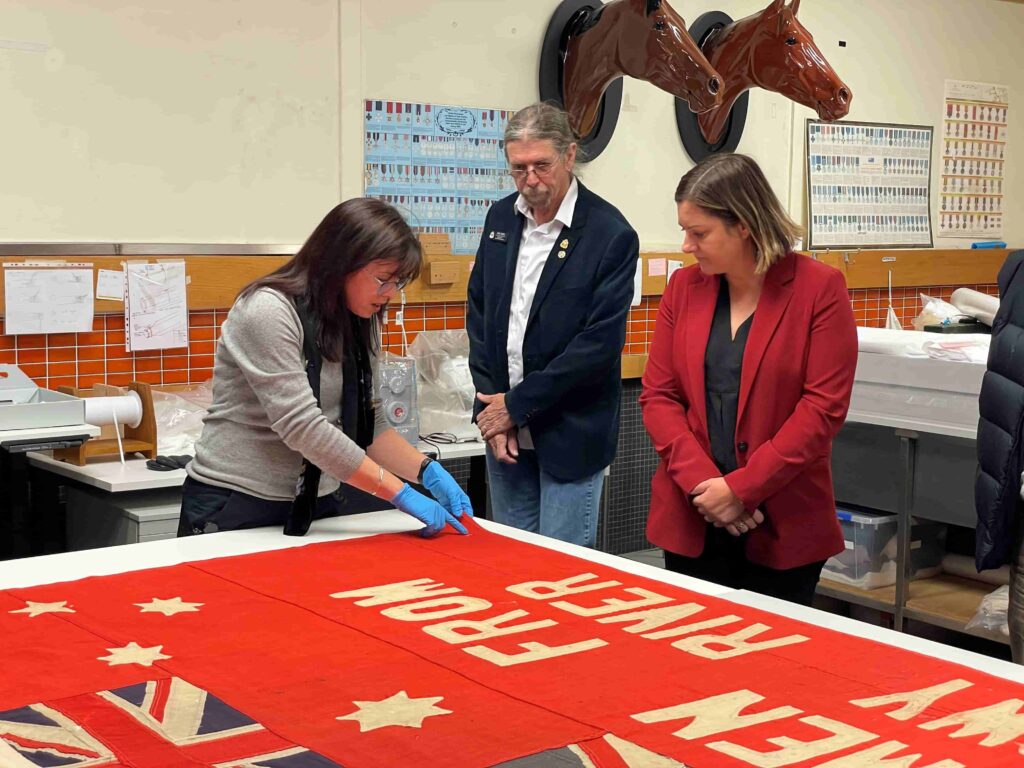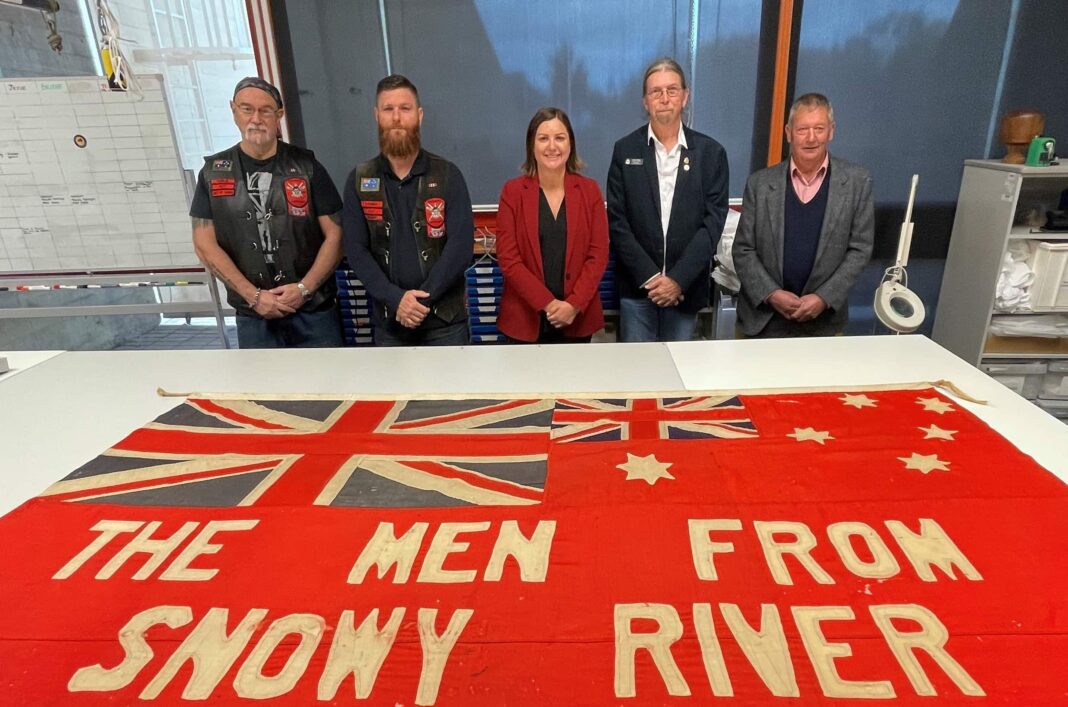As Anzac Day 2021 dawns, Kristy McBain, Federal Member for Eden Monaro, remembers the WWI ‘The Men from Snowy River March’:
The war memorials dotted across Eden-Monaro symbolise the way our defence force and efforts for peace touch us all. Towns big and small are called to that service, even though those challenges, more often than not, happen on a global stage thousands of kilometres away.
Each community has its own important story to tell, but on the eve of Anzac Day I was proud to attend the Australian War Memorial and reflect on a chapter of Monaro history, side by side with Phil Pope, president of Delegate RSL Sub-Branch and past president Alan Standen, and David Campbell and Joseph Zammitt representing the Men From Snowy River Chapter of the Patriots Military Motorcycle Club.

‘The Men from Snowy River March’ is a source of great pride for our high-country communities, and forms part of our national identity. Like any ‘great’ story it comes with a mix of conflicting feelings.
The March left Delegate on 6 January 1916 with 14 members. Goulburn was in their sights with the aim of picking up new recruits for World War I along the way. A large crowd gathered as these young men stepped off holding high a banner sewn by the women of Delegate. It was this banner that drew me to the War Memorial this week, its precious threads of red, white and blue are safe in the nation’s vault of treasures.
On paths still used today, the March passed through Bombala, Nimmitabel, Cooma, Bunyan, Bredbo, Michelago, Queanbeyan, Bungendore and Tarago before reaching Goulburn on 29 January 1916.
Numbers had swelled to 144 men and boys; the original 14 members had marched 354 km from Delegate.
Tragically, of the 144 men, 39 were killed in action on the Western Front. Another 75 were seriously wounded, and it’s only all these decades later that we have a sense of the trauma those who made it home had to contend with – perhaps in the stoic silence of the time.
Ernest Albert Corey of Numeralla was one of the ‘Men from Snowy River’.
Corporal Corey is perhaps the most decorated soldier who enlisted as part of the March.
Born in Numeralla on 20 December 1891, he was educated at Thirbegal Public School, about 30 km from Cooma, and left school to work as a blacksmith’s striker at ‘Martin’s Smithy’ in Cooma.
He joined the ‘Men from Snowy River March’ at Nimmitabel and left Australia in September 1916 as part of the 55th Battalion, 5th Division, Australian Imperial Force.
The 55th Battalion arrived in France in March 1917, and in April the 5th Division was called up to relieve the 1st Australian Division at Bullecourt. It was here that then Private Corey won the first of four Military Medals, for his work as a stretcher bearer.
He would go on to win three Bars to his initial Military Medal, all for work as a stretcher bearer on the Western Front.
Corporal Corey is the only Commonwealth soldier to be awarded four Military Medals.
Once home, Mr Corey worked at Cooma as a contract rabbiter, and in 1922 moved to Canberra as a camp caretaker. On 23 September 1924, at St Gregory’s Catholic Church, Queanbeyan, he married Sarah Jane Fisher; they had one daughter, but the marriage was dissolved in 1935.
Between 1927 and 1940, he worked in Canberra as an office cleaner with the Department of the Interior, then served with the 2nd Garrison Battalion in World War II.
He was later employed as a caretaker and cook and as leading hand at the Canberra incinerator.
In May 1971, Ernest Corey was interviewed at his nursing home in Queanbeyan, where he voiced pride at being awarded four gallantry awards for saving lives, rather than taking them.
Mr Corey died in August 1972 and is buried in the ex-servicemen’s section of Woden Cemetery in the ACT.
A memorial plaque dedicated to Ernest Corey can be found today on the Cooma Memorial.
The words below are excerpts from the citations received for Corporal Corey’s four Military Medals:
“As a stretcher bearer, [he] showed great courage and devotion to duty. Although under direct enemy observation, he carried out his duties continuously for 17 hours without rest.”
“The greatest danger did not deter this man from doing his duty when his services were required, and he tended the wounded and carried them to places of safety continuously throughout the engagement, often under very heavy artillery and machine gun fire.”
“Throughout the whole operation he set a fine example of bravery and coolness to all ranks.”
“He worked continuously and arduously and was the means of saving the lives of many of the wounded. He was most unselfish throughout and cheerful at all times and under all circumstances.”
The qualities displayed by Ernest Albert Corey during his military service are celebrated and remembered today.
In the Second World War, ‘The Men from Snowy River March’ formed again with 15 volunteers in Delegate. Just over 100 had joined their ranks by the time they arrived in Canberra.
You would be mistaken for thinking the service, spirit, and commitment evident in these stories was only ‘of that time’.
I see the goodness of Mr Corey and those who marched with him to Goulburn, every day in the various people and groups I work with.
Being a member of Australia’s Defence Forces is extreme community service and a very real and unique experience in its own right. We pause this Anzac Day to give thanks to those who serve us in this way.
As you reflect, consider what you are able to bring to your local community and the value it can add to the lives around you and indeed your own life.
Acknowledgement: Thank you to the staff of the Australian Parliamentary Library for your assistance with this article. Most of the information is taken from D Rutherford, ‘Men from Snowy River: the story of a famous First World War recruitment march,’ Wartime, issue 26, 2004, pp. 18-21.



